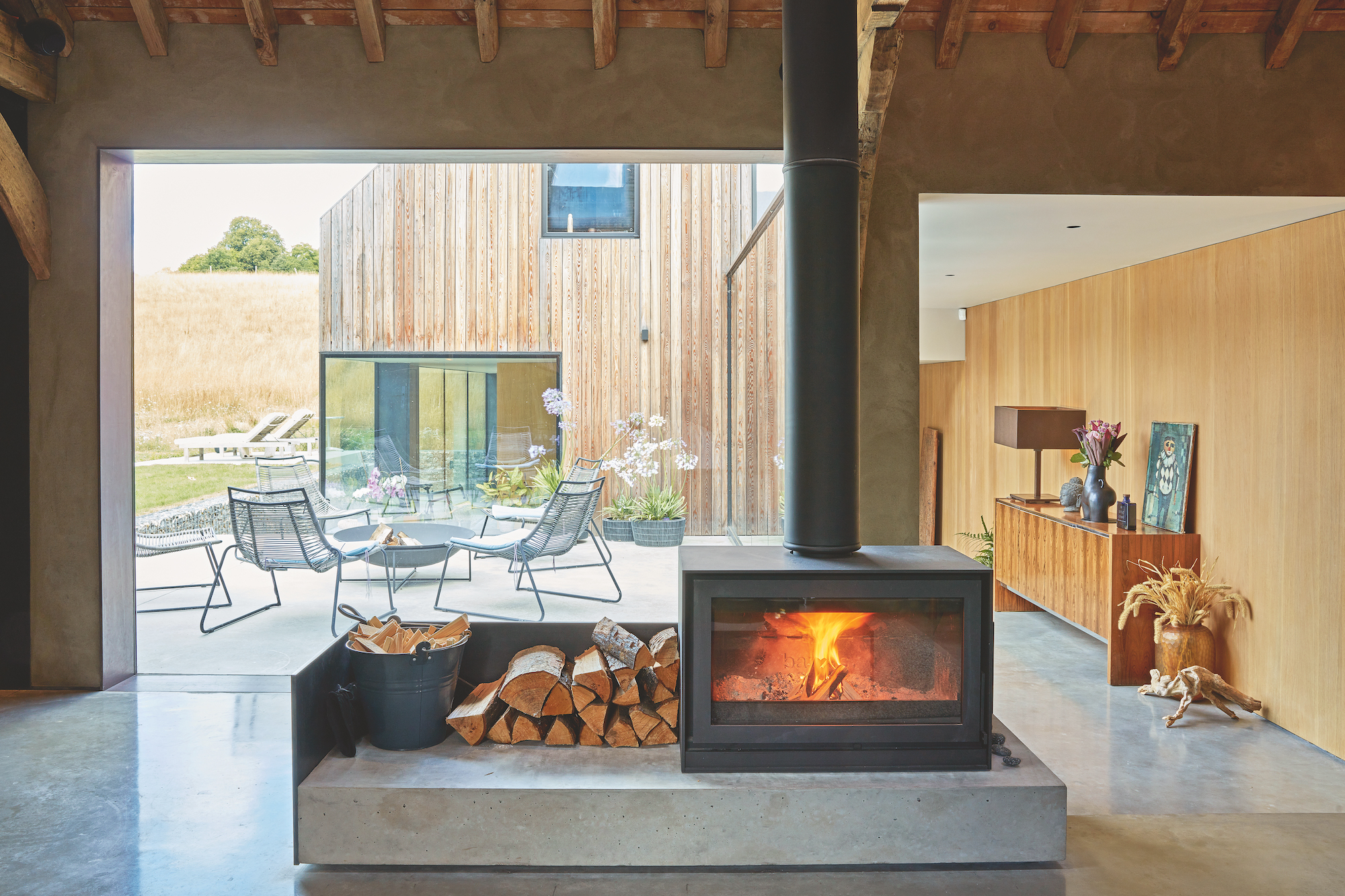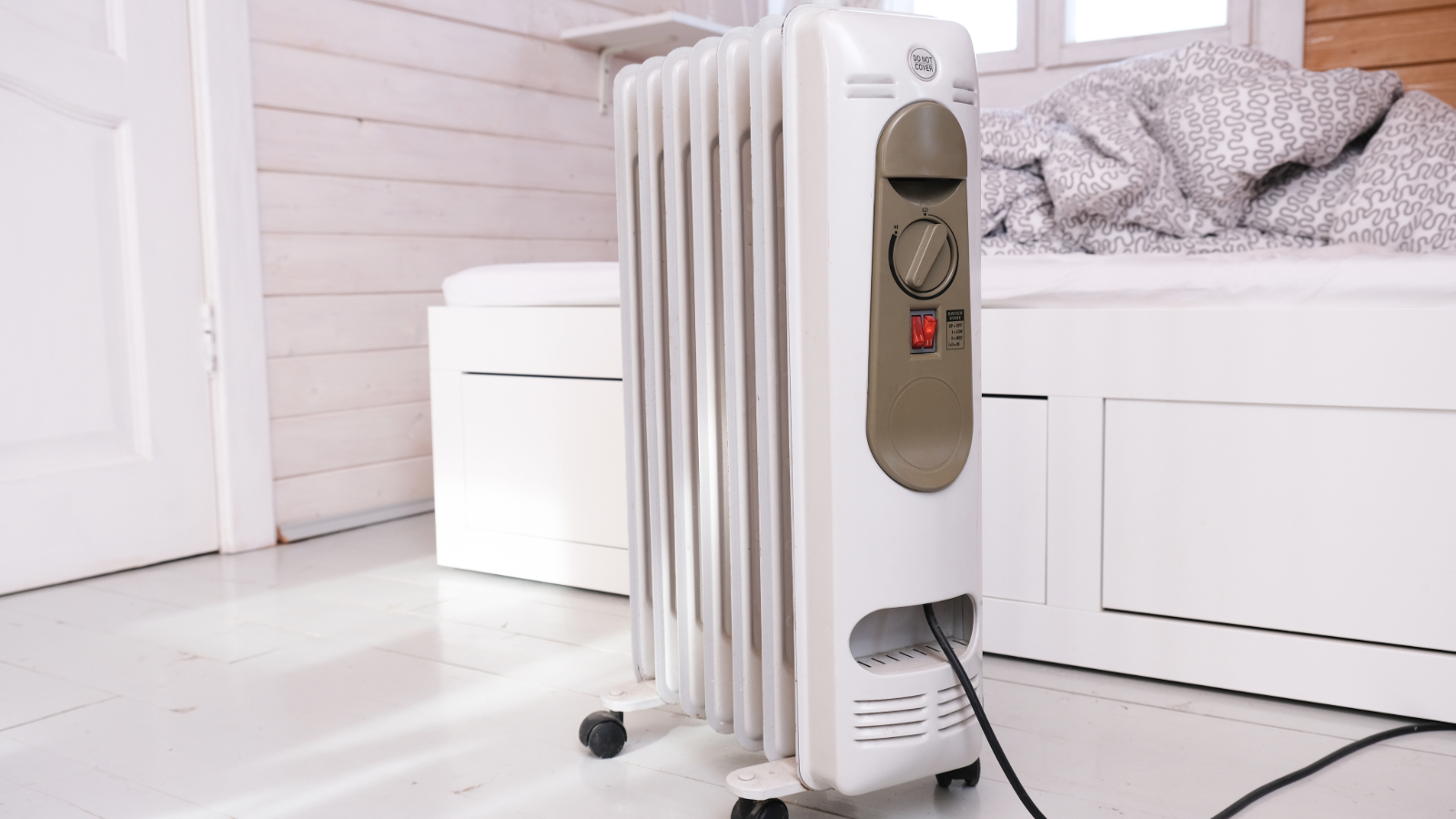
Relaxing in front of a fire is wonderfully cosy, but are wood burners bad for the environment and do they contribute to global warming?
There is a lot of contradictory information about the green credentials of log burning stoves, as well as biomass boilers, so it can be hard to make a decision to remove or install one.
In this article, we will lay out the ecological pros and cons of a wood burner to help you make an informed decision about heating your home.
Are wood burners bad for the environment?
Wood-burning stoves, perhaps surprisingly, offer up a low-carbon alternative to heating your home using fossil fuels like oil and gas. Trees absorb carbon dioxide as they grow, which is returned to the atmosphere when the wood is burned. For this reason, they don't contribute to global warming as they are close to carbon neutral.
However, wood fires produce vast quantities of particulate matter, tiny fragments of soot, in a similar way to a car. These can cause health problems in humans. UK Government figures reveal that the annual mortality of human-made air pollution in the UK is roughly equivalent to between 28,000 and 36,000 deaths every year.
UK Government statistics show that domestic wood burning has become the single biggest source of small particle air pollution in the UK, exceeding that of road traffic.
And research from the Department for Environment, Food and Rural Affairs (DEFRA) in February last year revealed that domestic woodburning (from closed stoves and open fires) was responsible for 17% of particulate air pollution in 2021 – although previous DEFRA data had suggested this figure was actually 38%.
Bring your dream home to life with expert advice, how to guides and design inspiration. Sign up for our newsletter and get two free tickets to a Homebuilding & Renovating Show near you.
Sustainability expert and Homebuilding and Renovating contributor Kate de Selincourt said: “Smoke from woodburning stoves contains various pollutants such as microscopic particulates (PMs) and various oxides of nitrogen (NOx).
“A lot of this pollution goes up the chimney, where it pollutes the outside air. Some of the pollution inevitably re-enters the home as well as getting into neighbouring homes through ventilation, gaps around doors and windows and so on.
“Some smoke also comes directly into the home particularly when the stove is opened to add fresh logs, meaning that homes with log burners can have quite high levels of indoor pollution.
“Particulate pollution is linked to increases in respiratory and heart disease, and even damage to the brain and reproductive system. Nitrogen dioxide irritates the respiratory system and can trigger asthma attacks. This is also an issue with gas cooking.”
If a wood-burning stove is not running correctly – for example, if the air supply is compromised – there is also a risk of carbon monoxide (CO) poisoning. Any room where either solid fuel or gas is being burned (e.g. a gas cooker or open-flued boiler) should be fitted with a CO alarm.
Why wood burners are bad for air pollution
The main pollutant emitted by burning solid fuels like wood is ultra-fine particulate matter, also known as PM2.5, which is widely acknowledged as the air pollutant with the greatest impact on human health.
Both short and long-term exposure to PM2.5 increase the risk of early death from respiratory and cardiovascular diseases, and children growing up exposed to PM2.5 are more likely to develop asthma
Bruce Allen, chief executive officer of HETAS and Woodsure says wood burner users should look for the Ready to Burn certification scheme, which aims to help consumers choose the cleanest fuel for their home.
He said: “Burning unregulated fuels can have a negative impact on the environment and air quality, and thus your health and that of others. Those with wood-burning stoves should look out for the Ready to Burn logo, which means it is certified as having a moisture content of less than 20%. [Burning wet wood gives off more harmful emissions] and this should be avoided at all costs.
“The Ready to Burn mark helps consumers to easily identify solid fuels that are legal to burn at home in compliance with the new Air Quality Regulations. Applying the Ready to Burn mark to solid fuels is a big step forward in helping people to make cleaner safer choices when it comes to domestic burning.”
A good example of buying "Ready to Burn" logs is this bulk bag from Amazon for £144.48. And if you're looking for where to store all those seasoned, dry "Ready to Burn" logs, you can check out our best log store guide.
Why wood burners are carbon neutral and don’t contribute to global warming
Despite the fact that it gives off so much carbon dioxide, wood can be a carbon-neutral energy source – which may seem confusing,
Through its life cycle, the tree will absorb a significant amount of carbon dioxide, and when the wood is burned the absorbed carbon is released back into the atmosphere. This amount of absorbed CO2 during the lifetime of the tree is balanced by the overall amount of CO2 released when the wood is burned. Therefore, the carbon dioxide actually ad.ded to the atmosphere is effectively zero - if the tree is regrown
Chris Baines, the managing director of Eurostove, said: “Technically, burning wood releases the same amount of CO2 as the wood would release if it was left to rot naturally.
“So if you are buying your wood from a sustainable source where replacement trees are planted it is an eco-friendly choice. It is certainly a better option than gas or oil.”
However, Kate says: “Burning wood used to be considered ‘carbon neutral’ because if a tree is cut to be burned, another tree could grow up in its place and re-absorb the carbon.
“However, recognition has grown that this is a slow process taking years or even decades, and in the meantime the carbon dioxide remains in the atmosphere, driving global heating. And the re-growth is never guaranteed.
“When tree cutting has to take place there are alternative uses for the timber – for example, processing into construction products like OSB board – that could instead lock up the carbon and keep it out of the atmosphere indefinitely.”
What is the most eco-friendly wood burner?
The Department of Environment, Farming and Rural Affairs (Defra) is the UK Government body tasked with looking after the natural environment and farming.
In 1993 the organisation brought in additions to the Clean Air Act prohibiting the production of dark smoke from chimneys and the emission of grit, dust, and fumes from furnaces and chimneys in densely-populated areas.
Defra-approved stoves have passed rigorous testing against criteria for emission levels and will produce only a limited amount of smoke during normal operation.
These approved stoves have usually been modified to limit the level the appliance can be starved of air when in use. An air-starved stove can emit far more black smoke.
However, Residents Against Dirty Energy (RADE) an organisation that fights the air pollution produced by fossil fuels, warns against using them.
A recent report from the European Environment Bureau showed that even certified 'Ecodesign stoves' (what is an ecodesign stove?) produce 750 times more PM2.5 per unit of energy produced than a modern lorry.
Sam is based in Coventry and has been a news reporter for nearly 20 years. His work has featured in the Mirror, The Sun, MailOnline, the Independent, and news outlets throughout the world. As a copywriter, he has written for clients as diverse as Saint-Gobain, Michelin, Halfords Autocentre, Great British Heating, and Irwin Industrial Tools. During the pandemic, he converted a van into a mini-camper and is currently planning to convert his shed into an office and Star Wars shrine.

